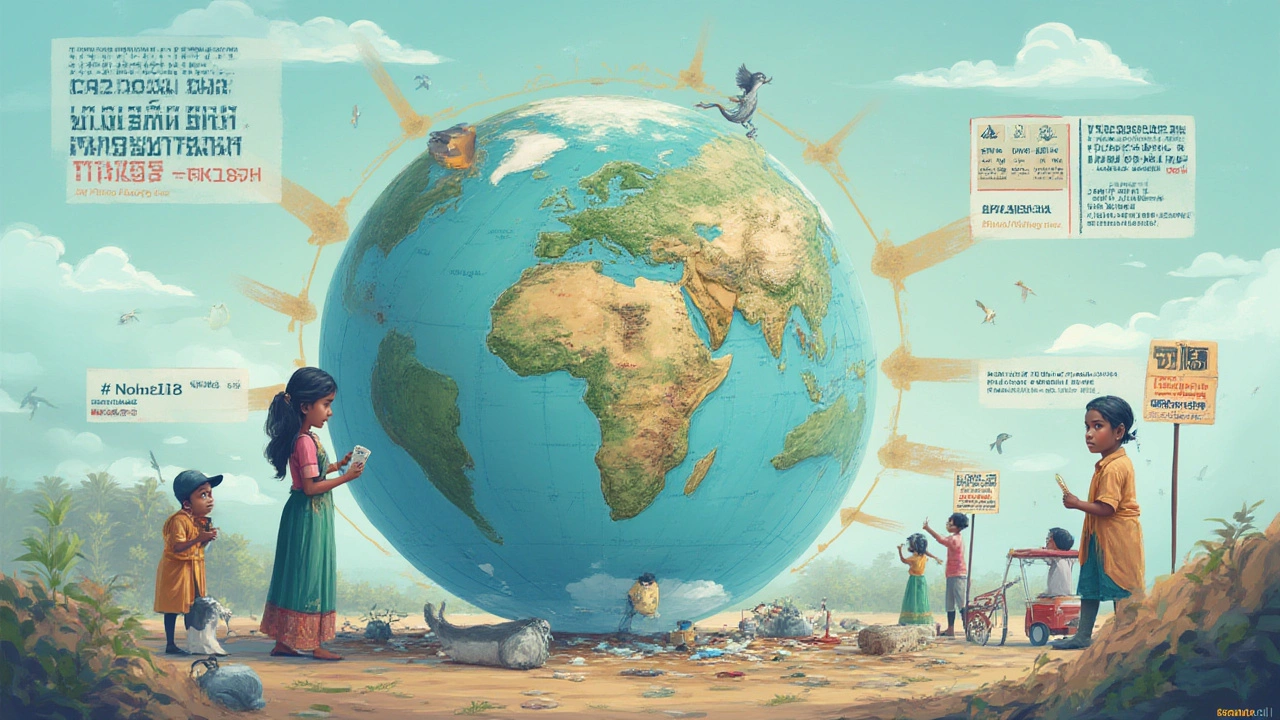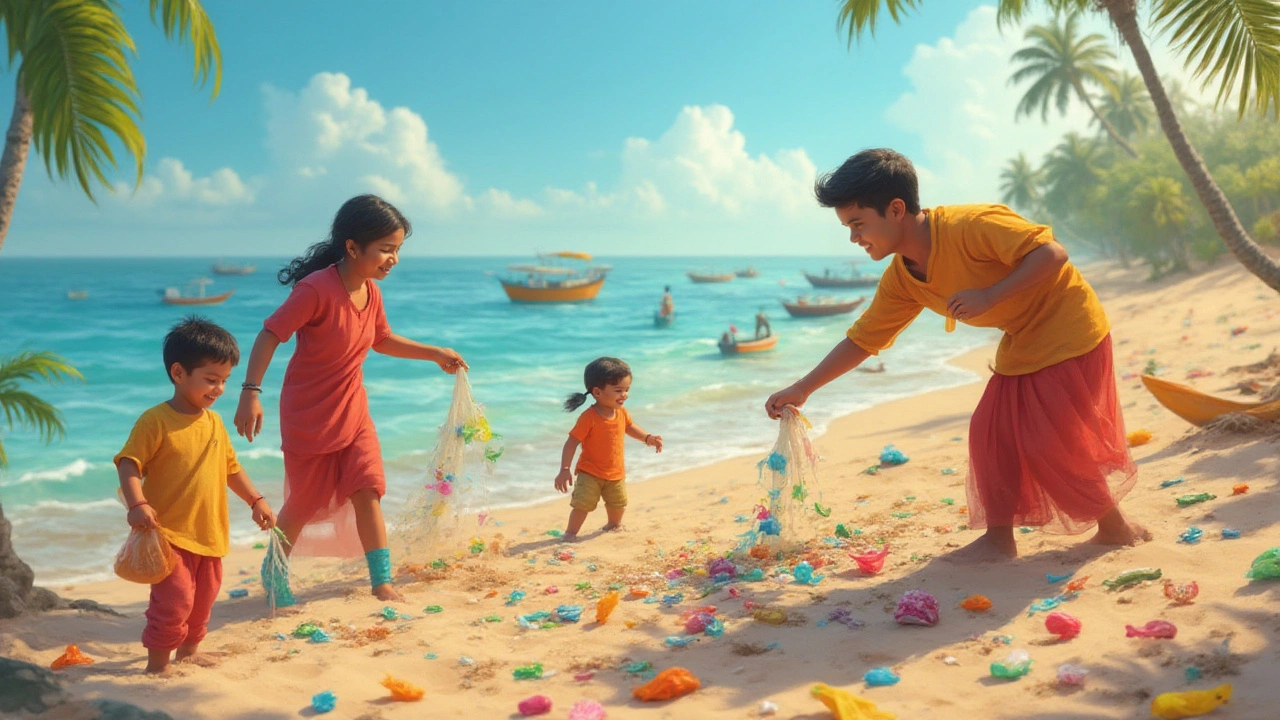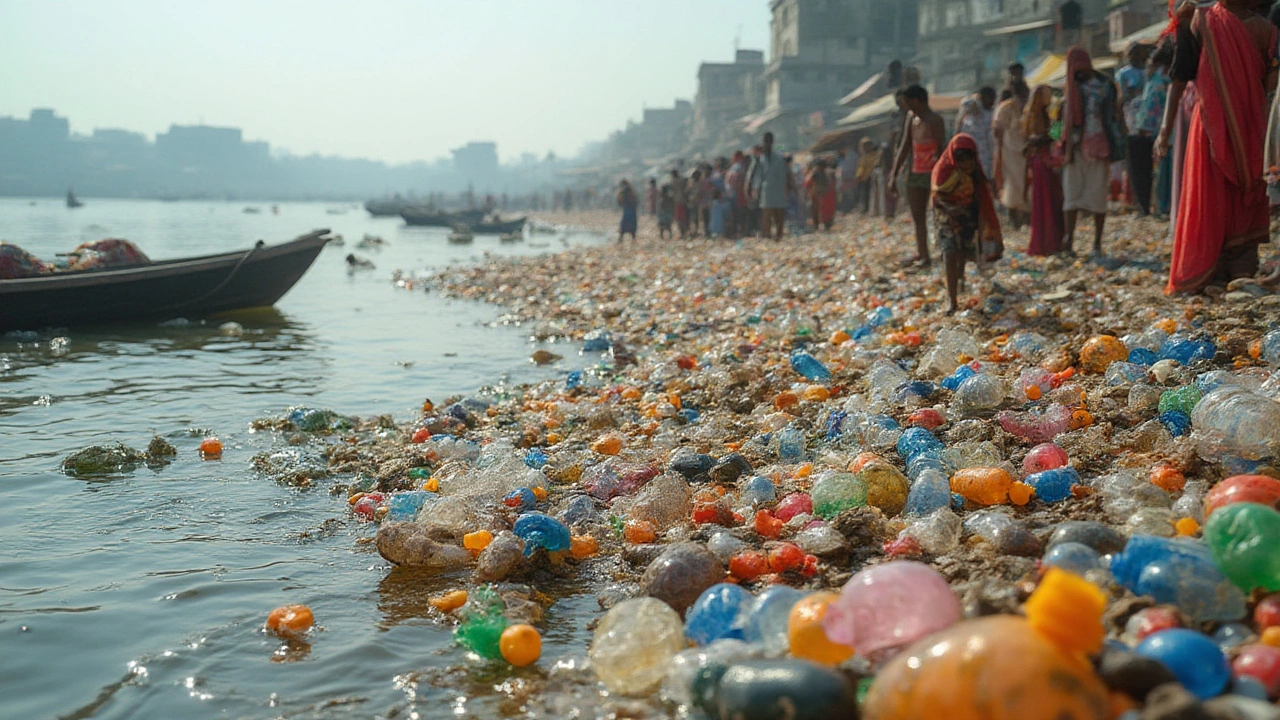You probably picture a plastic bottle floating in the sea, but have you ever wondered which country is responsible for most of the plastic waste choking the world's oceans? It’s a shocking reality—every minute, a garbage truck’s worth of plastic enters the ocean. But this trash doesn’t just pop up out of thin air. There’s a pipeline from our stores and homes to rivers and coasts, and some countries play a much bigger role than others. It’s not always who you might think.
The Worst Offenders: Who's Dumping the Most Plastic in the Ocean?
When it comes to dumping plastic in the ocean, one country consistently tops the charts: the Philippines. According to a 2022 study by the journal Science Advances, about 36% of all ocean-bound plastic comes from this one country. That’s more than one-third of the world’s plastic hitting the ocean waves. The Philippines, an archipelago of over 7,000 islands, faces serious challenges—small rivers, lots of coastline, and a weak waste management system all combine to push millions of tons of trash into the sea every year.
Here’s the thing—Asia dominates the list of major polluters. After the Philippines, countries like India, Malaysia, China, and Indonesia are some of the biggest contributors. If you’re surprised that big economies like the United States and many European countries aren’t number one, it all comes down to how waste is managed. The US and Europe generate piles of plastic waste, but most of it lands in landfills or gets burned for energy, for better or worse. In the Philippines, India, and their neighbors, waste collection and recycling often struggle to keep up, especially in crowded cities and poorer rural areas.
Now, check out these revealing numbers in a handy table:
| Country | Estimated Plastic Waste into Ocean (Tonnes/Year) |
|---|---|
| Philippines | 356,371 |
| India | 126,513 |
| Malaysia | 73,098 |
| China | 70,707 |
| Indonesia | 56,333 |
| Brazil | 37,799 |
Notice something wild? China, once considered a top polluter, has dropped in recent years due to stricter laws. China stopped accepting plastic waste from other countries in 2018, forcing other nations to handle their own mess—or ship it to other places like Malaysia. The plastic flows along the path of least resistance, often ending up in countries least equipped to deal with it.
But blaming these countries isn’t fair without context. The demand for low-cost packaging, cheap goods, and single-use plastics comes from everywhere—Europe, the US, and even me and Priya when we shop online. Richer countries have simply gotten much better at hiding their plastic problem, exporting trash, and investing in better waste management.

Why Is Plastic Ending Up in the Ocean?
So why does so much plastic pollution get dumped in the ocean? It boils down to two things: how much plastic is used, and what happens to it after throwaway. Many developing countries have growing populations and rising incomes, so more people buy packaged foods and bottled drinks. Without proper collection systems, that waste easily lands in rivers, drains, and eventually the sea.
The problem starts inland. Most plastic pollution in the sea begins miles from the coast—dropped on streets or dumped in open fields. From there, rain sweeps plastic bags and wrappers into rivers, and the flow carries trash all the way to the ocean. Look at the Pasig River in Manila: scientists estimate it alone dumps about 63,000 tons of plastic into Manila Bay every year. It’s like a superhighway for trash.
If you walk along a beach in Mumbai or Jakarta after a rainstorm, you’ll find mountains of plastic. Most of it isn’t even from far away—locals toss out daily household waste because city governments can’t collect it fast enough. In India, for example, it’s not rare to see cows chewing on plastic bags near landfills. These temporary solutions—like burning or an open dump—just can’t handle the daily avalanche.
Keep in mind, it’s not just bottles and bags. Microplastics make the problem sneakier. When big items break down, they become invisible fragments. These tiny bits, often less than 5 millimeters across, threaten marine animals and humans alike as they enter food chains. Studies in 2023 showed that even salt, beer, and tap water sometimes contain microplastics, proof that this pollution is impossible to escape.
Events like floods or typhoons make things worse. Heavy rain can flush weeks’ worth of trash into rivers in a single night. In low-lying countries with massive urban sprawl, disasters create waves of garbage, damaging homes and waterways. Local governments are simply overwhelmed most of the time; they cling to small-scale solutions, like river cleanup teams, but can’t tackle the root issues without big investments.
The flip side? Tourists love tropical beaches, but they’re often part of the problem too. Resorts use mountains of disposable packaging, tiny shampoo bottles, and single-use straws—all of which wind up floating in the very water their guests come to enjoy. It’s a vicious cycle, fueled by global demand for convenience.
Plastic manufacturing boomed after World War II. Soon after, South Asia and Southeast Asia were flooded with cheap, plastic-wrapped products—but governments weren’t ready with waste systems. Over time, these inefficiencies snowballed. The result is today’s crisis: rivers like the Ciliwung in Indonesia or the Ganges in India acting as plastic pipelines straight to the sea.

Can We Stop Plastic from Reaching the Ocean?
Tackling marine plastic waste feels like fighting an endless tide, but people everywhere are coming up with creative solutions. Some are small—think reusable shopping bags, metal water bottles, or skipping plastic straws at restaurants. Others work on a massive scale. For instance, Indonesia has pledged to cut ocean plastic by 70% within the next five years, investing in city waste programs and smarter recycling.
Plenty of startups are offering new tools. Giant river “trash traps” are popping up in places like Malaysia and the Philippines, filtering debris before it can reach open water. There’s also The Ocean Cleanup, a Dutch-founded group using high-tech booms to collect plastic from rivers and the Great Pacific Garbage Patch. It’s wild to see these projects in action—a huge floating net scooping up bags and bottles like a mechanical whale.
Education is key. Schools in Vietnam and Bangladesh now teach kids how to separate waste or compost food scraps. When kids grow up sorting trash, it sticks for life (trust me—I sometimes wish my dad nagged me about recycling as much as Priya does now!). Corporations are jumping in, too. Unilever, Coca-Cola, and Nestlé have big programs to collect the packaging they sell, especially across Asia. Sometimes it’s more about good PR, but at least it gets the conversation started.
If you want to help, consider these tips:
- Cut single-use plastics: Switch out sandwich wrap for reusable containers. Carry a sturdy tote to avoid plastic bags.
- Buy less packaged stuff: Choose stores and markets with minimal packaging, especially for fresh food.
- Sort at source: Even small home segregation helps if pickup services exist in your area.
- Support cleanups: Local groups often welcome volunteers for beach or river projects. Just a few hours makes a big dent.
- Look for recycled products: Buy from brands using recycled plastics. This creates demand for collected waste.
- Vote with your wallet: Support politicians and businesses that care about the environment. Pressure works—companies notice fast when their customers speak out!
Technology also helps. New enzymes discovered in 2023 can break down plastics faster than ever, offering hope for the future. Biodegradable plastics made from plant materials are another promising step—though they’re still rare, and only truly break down under certain conditions. But big change needs big buy-in: governments making rules, industries innovating, and all of us rethinking convenience. If the world invested just 1% of what it spends yearly on plastics into recycling, much of this waste problem could disappear.
The story isn’t about blaming one country and moving on. It’s about the entire global system—who makes the plastic, who uses it, and who is left to clean up. The ocean can be resilient, but it’s overloaded. Maybe the next time you see a plastic straw in your iced coffee, you’ll remember that most of the trash in the sea doesn’t come from lazy neighbors, but from social, economic, and political realities that need all of us to act together.
